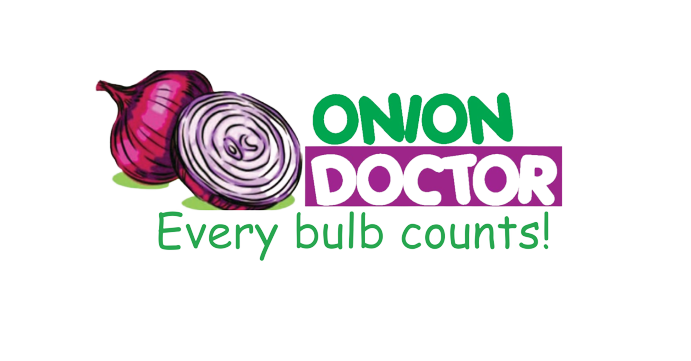Nursery Preparation And Transplanting

Are you in need of in-depth knowledge on onion and garlic production? If yes, we are a call away. Our service chatter includes: Onion seedlings, Garlic seedlings, Farm planning services, Soil testing, Drip irrigation installation and maintenance, Agronomic support, Onion and Garlic value pack and Farm management. For free consultation, placing orders or booking a visit with an agronomist, please contact us via Call or what’s app +254703982228, Email: Info@oniondoctor.co.ke.
We Onion Doctor offers on-farm trainings and guidelines on how to prep your nursery till transplanting, for better measurement and good coporation of the manure. Also guide on the spacing of the nursery. We offer drip irrigation services depending on the acreage of your land, also guide on how to manage weeds and pests during the growing season.
Nursery: Make your nursery bed to raise your seedlings near the planting site to make it easier for you during transplanting. Follow the following guidelines while preparing your seedling nursery;
You should adjust the beds to be 1metre wide while incorporating compost manure that is well decomposed.
The seedbed needs to be under a shade, or you can as well prepare a raised cover to protect seedlings from direct sunlight.
On the seedbed, make rows 15cm apart and drill the seed thinly 1cm deep.
Cover the seeds using soil and mulch.
Onions take between 7-10days to germinate. You should ensure that you water the seedbed daily but be careful not to flood it. After the seeds germinate, remove the mulch.
Transplanting Onions:
Seedlings are transplanted 6-8weeks after sowing. You can as well transplant your onions when it has produced three to five well-formed leaves, and its base is pencil thick. As you approach the intended day of transplanting (7-10 days before transplanting); Gradually reduce the rate of watering. This will make your seedlings stronger in terms of structure. Remove the shade cover to get the seedlings more used to stronger sunshine. Before transplanting, you should irrigate your seedbed to avoid damaging your seedling as you pull it from the seedbed. You should also water the field a day before you intend to transplant.
During transplanting, you should follow the following guidelines;
You should transplant early in the morning or late in the evening (6-10 am or 4-6 pm) when the sun is not scorching. Transplant your seedlings in 2.5-3cm deep trenches at a spacing of 30cm between rows and 8-10cm between plants. Firm up the seedling with the surrounding soil. Cut off 50% of green tops to hasten your onion take off.
Fertilizer Requirements For Onions:
Before planting, you should apply 10-16tonnes of well-decomposed manure per acre. Ensure the manure is well rotten as fresh manure will cause the development of thick leaves at the expense of bulb formation. You can also add 80kg of TSP to the fertilizer and incorporate it into the soil.
Top Dressing Onions:
You should top-dress your onions 30days after transplanting at the rate of 40kg of CAN per acre. The second topdressing should be done 45days after transplanting at the rate of 80kgs of CAN per acre. The top dressing exercise should be completed before the onions start forming bulbs. You should not exceed the recommended standards as too much nitrogen will result in the formation of thick necks.
Onions require just enough moisture during the growing stage. At the bulbing stage, the onions will require a substantial amount of water. You should reduce the watering towards the maturity stage. You should take care not to over irrigate your crop as excessive moisture encourages the spread of fungal diseases. Also, water stress will cause the bulbs to split or form multiple bulbs in one plant.
Diseases Affecting Onions:
Onion diseases can result in considerable losses in terms of the quality and quantity of your produce. It is essential to quickly identify any disease attacks and mitigate them before the disease spreads all over your farm. Some of the conditions that attack onions include;
Purple Blotch– A fungus causes this disease. It appears as small white spots on the foliage and spreads rapidly under moist conditions. A severe attack is indicated by the appearance of large purplish blotches surrounded by yellow to orange border. This infection can spread to the onion bulb where it may cause a wet orange spot starting from the neck. To control purple blotch, you should;
1. Use recommended spacing to ensure proper drainage of the field
2. Spray fungicides such as Mancozeb (Dithane M45®) to the crop to control the spread.
3: Use resistant varieties such as Red Pinoy.
Pests Affecting Bulb Onions:
Pests cause a lot of losses in terms of quality and quantity of the crop. Onions are attacked by a variety of pests the most common being; Onion flies– They appear as white cream in color. Onion flies cause damage as they eat the lateral roots causing tunnels into the taproot, plants become shriveled or eventually die. They are controlled by;
1. Practicing crop rotation
2. Practicing field sanitation by destroying infested plants.
3. Using well-decomposed manure.
Harvesting And Post-Harvest:
Onions usually become ready for harvesting at around 120 to 150 days after transplanting. You should harvest your bulb onions when 75 % of the tops of the crop have dried and fallen over. The onions are harvested by pulling and leaving the bulbs on the soil surface to begin the process of curing.
Post-Harvest Care For Bulb Onions:
Post-harvest care of onions involves the process of curing. Curing is whereby you dry the neck and outer leaves of the bulb. This prolongs the shelf life of the bulb by preventing moisture loss and attack by diseases. Curing can either be protected or done in the field.

